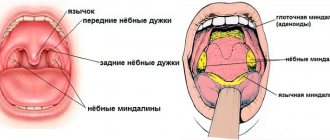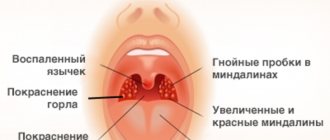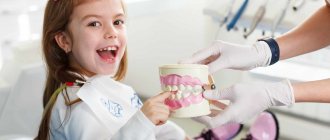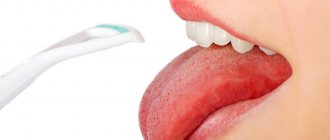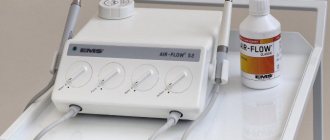Is an employer required to have a first aid kit?
Labor legislation also regulates issues of labor protection for workers.
This does not depend either on the size of the enterprise where citizens work, or on its organizational and legal form. Not only firms, but also individual entrepreneurs with employees are subject to labor laws. Read about the 2022 innovations in labor protection in the article “Labor safety in 2022: new rules and changes .
Compliance with all labor safety principles is the responsibility of the employer. These include the provision of sanitary services and medical care for workers. This obligation is established by Art. 223 Labor Code of the Russian Federation. What is included in these concepts:
This is not a complete list of measures that an employer must take to ensure occupational safety. As you can see, the presence of a first aid kit for employees is established by the requirements of the labor legislation of the Russian Federation.
You will find a link to a sample order for approving the contents of a first aid kit at the beginning of the article.
Let's consider what requirements apply to emergency first aid kits.
From March 1, 2022, changes regarding labor protection at enterprises will come into force. Sign up for a free trial access to ConsultantPlus and find out what needs to be changed in the organization of labor protection.
How should you keep your first aid kit?
It is important that the contents of the first aid kit are constantly replenished with the necessary supplies and medications. Expiring medications should be replaced regularly.
For this, it is best to use a box, box or container that can accommodate all the medications and supplies. You can also purchase a ready-made first aid kit in a special container at the pharmacy. The drugs and supplies in the finished kit are packaged in the order and arranged in such a way that they are convenient to get in emergency situations.
It is very convenient to store medicines in several containers in which tablets, ampoules, vials, syringes and dressings are distributed.
Changes in requirements for first aid kits
Since September 2022, new requirements for the first aid kit at the enterprise have appeared; to be more precise, the new requirements relate to the contents of the first aid kit. The fact is that a new order came into force, which canceled the old order.
Previously, the first aid kit for employees was equipped according to order 169n dated 03/05/2011. From September 1, this order lost force due to the entry into force of the order of the Ministry of Health and Social Development dated September 18, 2020 No. 995n.
Starting from September 1, 2022, the first aid kit will be equipped according to another order.
The first aid kit is formed in accordance with the order of the Ministry of Health and Social Development dated December 15, 2020 No. 1331n.
The formation of a first aid kit according to order 1331n must be carried out from September 1, 2022. If the enterprise has a first aid kit for employees under an order that has expired, then it can be left until the end of the expiration date, but no later than August 31, 2025.
Did you buy a first aid kit using your personal injury contribution and don’t know if VAT can be deducted? The answer is in our review “Purchase of personal protective equipment at the expense of the Social Insurance Fund: what about VAT deduction” .
Packaging of emergency medicines for the most common pathological conditions in outpatient dentistry
To provide effective emergency care for somatic pathology at a dental appointment, you should have syndromic sets of medications placed in a portable bag (suitcase), where, in addition to medications, there is also the necessary equipment and algorithms for providing assistance.
Legal basis:
The composition of the first aid kit for providing emergency assistance in organizations that do not provide emergency medical care has not been approved at the federal level. The management of a medical organization has the right to independently approve the composition of such a first aid kit by analogy with the composition of the medical kit of a mobile emergency medical team (see standards below). It is worth considering:
- Features of storage of narcotic drugs if the organization has a drug license.
- Order 169n dated 03/05/2011 regulating a first aid kit (should be available even in a cafe).
- The requirements of clause 8.3 of SP 3.1.5.2826-10 “Prevention of HIV infection” and Appendix 12 to SanPiN 2.1.3.2630-10 The composition of the “anti-AIDS first aid kit” is also not approved at the federal level.
- Appendix to the order of the Ministry of Health and Social Development of the Russian Federation
dated December 7, 2011 No. 1496n
Have in a dental outpatient facility at least:
1 One (1) per office: a set of devices, instruments, medicines, teaching materials and documents for providing emergency medical care for life-threatening conditions (a first aid kit for providing emergency care for general somatic complications in dental offices)
2 One (1) per clinic (clinic) – Tracheotomy instrument set
This list of medications for the formation of syndromic patterns was prepared on the basis of clinical recommendations (protocols) for the treatment of emergency and life-threatening conditions adopted by professional medical associations of the Russian Federation
Along with the syndromic instructions, there should also be documents regulating how, where, what and in what dose to administer. It is most correct to draw up documents such as SOPs.
SOPs for the treatment of threatening and emergency conditions, compiled on the basis of current clinical recommendations, can be downloaded at https://algohelp.ru
Ampoules, tablets and inhalers must be in syndromic storage in full accordance with the appendix to order No. 1496n
Bottles with saline solution, as well as medical supplies (air duct, microtracheotomy set, etc.) can be placed in a single bag for the institution.
Some medicines are duplicated and can only be found in one stack. At the same time, in the remaining layouts it should be noted which drug to take from.
Some of the drugs (bottles with solutions) are stored in a single common storage area on the institution (floor), in the same place as medical supplies. appointments
- Acute coronary syndrome
| Name of the drug | Release form | Quantity per pack | Dose | Route of administration | Efficiency mark |
| Nitroglycerin spray | Bottle with dispenser | 1 | 1 dose | sublingually | Pain reduction Feeling better |
| Nitroglycerin granules. (if there is no spray) | 0.5 mg granules | 10 | 0.5 mg | sublingually | Reducing pain Improved well-being |
| Analgin (Metamizole sodium) | Ampoules 2 ml 50% | 2 | 2 ml | IV, IM | Reducing pain Improved well-being |
| Aspirin (Acetylsalicylic acid) | Table uncoated - 500 mg | 1 package | 2 tables | Per os, Chew | Pain reduction Feeling better |
| Syringes* | 5ml | 1 |
- 2. Hypertensive crisis:
| Name of the drug | Release form | Quantity per pack | Dose | Route of administration | Efficiency mark |
| Capoten (captopril) | Table 0.025 each | package | ½ tablet | sublingually | Decrease in A/D |
| Baralgin (Metamizole sodium + pitofenone + fenpiverinium bromia) | Ampoules 10 ml | 2 ampoules | 1 ml | V/muscular | Pain reduction |
| Nitroglycerin spray | Bottle with dispenser | bottle | sublingually | Decreased blood pressure | |
| Nitroglycerin granules (if spray is not available) | 0.5 mg granules | package | 0.5 mg | sublingually | Decreased blood pressure |
| Corvalol | Bottle | 1 | Adult 40 drops Child 2 drops per year of life | Per os | Calming effect |
| Syringes* | 5 ml | 1 |
- 3. Fainting-collaptoid state
| Name of the drug | Release form | Quantity per pack | Dose | Route of administration | Efficiency mark |
| Ammonia | Bottle – 10 ml 10% | 1 bottle | couples | With air inhaled through the nose | Restoring consciousness |
| Gutron in drops** | Bottle 10 ml 1% | 1 bottle | Adults and children over 12 years old: 7 drops; Children under 12 years old: 1 drop for 2 years of life | Per os, on a lump of sugar or with 2-3 ml of water | Restoring consciousness |
| Prednisolone (can be taken from the Anaphylactic Shock pack) | Ampoules 30 mg/ml | 2 | adults and children under 14 years of age: 90–120 mg (3-4 ampoules); children (up to 14 years old), 1-2 mg/k | i/m | Stabilization of blood pressure, restoration of consciousness |
| Syringes* | 5 ml | 1 |
- 4 Anaphylactic shock:
| Name of the drug | Release form | Quantity per pack | Dose | Route of administration | Efficiency mark |
| Epinephrine solution adrenaline hydrochloride 0.1% (Store in a cool place) or adrenaline hydrotartrate 0.18% (can be stored at a temperature not exceeding 25 degrees C) Regardless of where adrenaline is stored, a 5 ml syringe should be stored next to the adrenaline ampoules | Ampoules 1.0 | 2 | Adults 0.5 Children 0.1 ml/year) no more than 0.3, | V/m, IV drip in saline solution | Improvement |
| Prednisolone | Ampoules 30 mg | 4 | Children 5 – 10 mg/kg Adults 150 mg | IV, IM | Improvement |
| Dexamethasone (if prednisolone is not available) | Ampoules 4 mg | 2 | Adults 4 mg Children 0.02 mg/kg | IV, IM | Improvement |
| Salbutomol | Inhaler with spacer | 1 | 1 dose | With inhaled air | Improvement |
| Sodium chloride solution | Bottle 0,9% — 200,0 | 1 bottle Stored in general storage | 10 – 20 ml/kg | IV | Improvement |
| Suprastin (Chloropyramine solution) | Ampoules 2% - 2.0 | 1 ampoule | Children 0.1 -0.15 ml/year Adults 2 ml | IV, IM | Improvement |
| Syringes* | 5 ml 10 ml | 2 1 |
- 5. Cramps:
| Name of the drug | Release form | Quantity per pack | Dose | Route of administration | Efficiency mark |
| Diazepam (only if the clinic has the right to stock this drug) | Ampoules 0.5% - 2.0 | 2 | Children 0.1 – 0.2 mg/kg not more than 4 ml Adults 2 – 4 ml | IV, IM | Stopping seizures |
| Syringes* | 5 ml | 1 |
- 6. Hypoglycemia in diabetes mellitus:
| Name of the drug | Release form | Quantity per pack | Dose | Route of administration | Efficiency mark |
| glucose solution | Ampoules 40% — 10,0 | 4 | Children 0.2 ml/kg Adults 40 ml | Per os, IV | Improvement |
| Glucose solution | Bottle 5% — 200,0 | 1 bottle Stored in general storage | 10 – 20 ml/kg | IV | Improvement |
| Syringes* | 20 ml | 1 |
- 7 Sudden cardiac arrest in an adult, child (only for clinics licensed to provide anesthesia)
| Name of the drug | Release form | Quantity per pack | Dose | Route of administration | Efficiency mark |
| Epinephrine solution adrenaline hydrochloride 0.1% (Store in a cool place) or adrenaline hydrotartrate 0.18% (can be stored at a temperature not exceeding 25 degrees C) | Ampoules 0.1%-1.0 | 2 | Children 0.1 ml/year (0.01-0.02 mg/kg), Adults 1.0 | IV, IV | Heart rate restoration |
| Amiodarone (cordarone) | Ampoules 150 mg | 2 | 300 mg | IV, IV | Heart rate restoration |
| Sodium chloride solution | Bottle 0,9% — 200,0 | 1 bottle Stored in general storage | 10 – 20 ml/kg | IV | |
| Sodium chloride solution | Ampoules 0.9% -10 ml | 5 | IV | ||
| Syringes* | 10 ml | 2 |
- 8. Bleeding:
| Name of the drug | Release form | Quantity per pack | Dose | Route of administration | Efficiency mark |
| Dicynone | Ampoules 1 ml | 2 | Children 8 mg/kg Adults 1 ml | IV, IM | Stop bleeding |
| Hemostatic collagen sponge | Platinum in blister 5x5 | 1 | Locally | Stop bleeding | |
| Calcium gluconate | Ampoules 10% — 10,0 | 1 | Children 1.0 per year of life, Adults 10 ml | IV | Stop bleeding |
| Sodium chloride solution | Bottle 0,9% — 200,0 | 1 bottle Stored in general storage | 10 – 20 ml/kg | IV | Improvement |
| Syringes* | 5 ml 10 ml | 1 1 |
- 9 Stroke
| Name of the drug | Release form | Quantity per pack | Dose | Route of administration | Efficiency mark |
| Kapoten | Table 0.025 | wafer | ½ table | Under the tongue | Decrease in blood pressure |
| Glycine | 1000 mg | wafer | 1000 mg | Under the tongue | Improving the metabolism of the ischemic zone |
| Sodium chloride solution | Bottle 0,9% — 200,0 | 1 bottle Stored in general storage | 10 – 20 ml/kg | IV | Improvement |
- 10 Hives
| Name of the drug | Release form | Quantity per pack | Dose | Route of administration | Efficiency mark |
| Prednisolone (can be taken from the Anaphylactic shock pack) | Ampoules 30 mg | 4 | Children 2 – 5 mg/kg Adults 190-120 mg | IV, IM | Improvement |
| Suprastin (Chloropyramine solution) (can be taken from the Anaphylactic shock pack) | Ampoules 2% - 2.0 | 1 ampoule | Children 0.1 -0.15 ml/year Adults 2 ml | IV, IM | Improvement |
| Syringes* | 5 ml | 2 |
- 11. Quincke's edema
| Name of the drug | Release form | Quantity per pack | Dose | Route of administration | Efficiency mark |
| Prednisolone (can be taken from the Anaphylactic shock pack) | Ampoules 30 mg | 4 | Children 2 – 5 mg/kg Adults 190-120 mg | IV, IM | Improvement |
| Suprastin (Chloropyramine solution) (can be taken from the Anaphylactic shock pack) | Ampoules 2% - 2.0 | 1 ampoule | Children 0.1 -0.15 ml/year Adults 2 ml | IV, IM | Improvement |
| Galazolin (Xylometazoline) | Bottle | 1 | 1-2 injections | Intranasally | Improvement |
| Syringes* | 5 ml | 2 |
- 12. Eclampsia
| Name of the drug | Release form | Quantity per pack | Dose | Route of administration | Efficiency mark |
| Diazepam (if the clinic has the right to store and use) | Ampoules 0.5% - 2.0 | 2 | Children 0.1 – 0.2 mg/kg not more than 4 ml Adults 2 – 4 ml | i.v., i.m. | Stopping seizures |
| Sodium chloride solution | Bottle 0,9% — 200,0 | 1 bottle Stored in general storage | 10 – 20 ml/kg | IV | Improvement |
| Magnesium sulfate solution. | Ampoules 25% - 10.0 | 2 ampoules | 10 ml ml diluted per 200 ml saline. solution | IV | Improvement |
| Anaprilin (Propronalol) | Table 0.04 | Blister | 0.01 (1/4 tablet) | Chew | Improvement |
| Papaverine hydrochloride | Ampoules 2% 2ml | 2 ampoules | 2 ml | i/m | Improvement |
| Syringes* | 5 ml 20 ml | 2 1 |
- 13. Attack of bronchial asthma
| Name of the drug | Release form | Quantity per pack | Dose | Route of administration | Efficiency mark |
| Salbutomol | Inhaler with spacer | 1 | 1 dose | With a breath | Improvement |
| Prednisolone (can be taken from the Anaphylactic Shock pack) | Ampoules 30 mg | 4 | Children 2 – 5 mg/kg Adults 190-120 mg | IV, IM | Improvement |
| Sodium chloride solution | Bottle 0,9% — 200,0 | 1 bottle. Stored in general storage | 10 – 20 ml/kg | IV | Improvement |
| Epinephrine solution adrenaline hydrochloride 0.1% (Store in a cool place) or adrenaline hydrotartrate 0.18% (can be stored at a temperature not exceeding 25 degrees C) take from the pack Anaphylactic shock | Ampoules 0.1%-1.0 | 2 | Children 0.1 ml/year) no more than 0.3, Adults 0.5 | PC | Improvement |
| Syringes* | 5 ml | 2 |
General installation - one per establishment or one per floor
Equipment:
| Name | Quantity |
| Device for measuring pulse rate and saturation (oxyhemoglobin) - household pulse oximeter | 1 |
| Blood pressure measuring device (tonometer) | 1 |
| cotton wool | 1 small package |
| Bandage | 2 packs |
| Disposable alcohol wipes for disinfection of injection sites | 10 |
| Air duct for adult | 1 |
| Air duct for a child | 1 |
| Venous/arterial tourniquet | 1 |
| Venous catheters on a needle, diameter 1.4 mm | 3 |
| Venous catheters on a needle, diameter 1 mm | 4 |
| Venous catheters on a needle, diameter 0.6 mm | 2 |
| Household oxygen inhaler | 1 |
| Band-Aid | 1 |
| Manual respirator (self-inflating bag) “Ambu” | 1 |
| System for transfusion of infusion solutions | 2 |
| Debridement catheter (may be included with tracheotomy kit) | 1 |
| Set for tracheotomy (conicotomy) | 1 |
| Laryngeal mask for tracheal intubation for adults (size 4, single use) or Combitube | 1 |
| Laryngeal mask for tracheal intubation for a child (size 3, single use) or Combitube | 1 |
| Phonendoscope | 1 |
| Syringes 5 ml* | 5 - if stored in general storage, if stored in syndromic storage, the quantity corresponds to the number of medications |
| Syringes 10 ml* | 2 if stored in general storage, if stored in syndromic storage, the quantity corresponds to the number of medications |
| Syringes 20 ml* | 2 if stored in general storage, if stored in syndromic storage, the quantity corresponds to the number of medications |
| Stand for mounting infusion solutions | 1 |
| Sodium chloride solution 0.9% - 200 ml for intravenous administration from the list of drugs for syndromic laying with o | 2 bottles |
| Glucose solution 5% - 200 ml for intravenous administration from the list of drugs for syndromic laying with o | 1 bottle |
* Syringes can be stored both in general storage and in syndromic medicinal storage, 1 syringe per individual name of the drug
The volume of the syringe corresponds to the dose of the administered drug, taking into account possible dilution
For drugs with a recommended maximum dose of up to 2-3 ml, 5 ml syringe
For drugs with a recommended maximum dose of 3 to 10 ml - 10 ml syringe
For drugs with a recommended maximum dose of 5 to 10 ml or more with mandatory dilution - a 20 ml syringe
** Possible substitutes for Gutron
There are no direct analogues of midodrine (Gutron) yet...
The closest in direction of action:
Fethanol
Mesocarb
Ekdisten
— Increased blood pressure due to the vasoconstrictive effect on peripheral vessels
— Improving the activity of consciousness during asthenia
— Psychostimulation for hypotension and asthenia
The closest action in terms of urgency is Fethanol.
Composition of the first aid kit according to the new order
Now let’s look at what composition a first aid kit should have for providing first aid under the new order and how it differs from the first aid kit at an enterprise under the old order.
Order No. 1331n is valid until 08/31/2027, that is, for 6 years.
So, what should be in the first aid kit:
Some points may not be staffed with the same units. For example, to close the item “Non-sterile disposable medical mask”, you can use:
The quantitative combination of different masks can be anything, the main thing is to close the total number in the first aid kit - 10 pieces.
Similarly, you can use different things for a first aid kit:
You will find a complete detailed list of first aid kits given in the order in our news “New requirements for first aid kits from September 1” .
All products in the first aid kit must be manufactured and registered in accordance with the law. They must have a current expiration date. Reuse of first aid kit items is prohibited.
Compared to previous requirements, the composition of the first aid kit has been reduced. Now you don’t need to store it:
- notebook,
- fountain pen,
- safety pins.
But at the same time, the number of necessary masks, gauze bandages and blankets has increased.
IMPORTANT! For the absence of a first aid kit, the employer is subject to a fine under Part 1 of Art. 5.27.1 Code of Administrative Offenses of the Russian Federation: from 2,000 to 5,000 rubles for individual entrepreneurs and from 50,000 to 80,000 rubles for legal entities.
Disposal of expired products
The order of the Ministry of Health states that after expiration dates, medical products and other items from the first aid kit are subject to write-off and destruction (disposal) in accordance with the legislation of the Russian Federation. The disposal of medical products is regulated by Federal Law No. 89 of June 24, 1998 “On production and consumption waste.” Since, according to current rules, there are no medicines in first aid kits, bandages, napkins, and expired adhesive plaster can be disposed of as normal household waste.
Results
A first aid kit should be available at any enterprise. From September 1, 2022, the mandatory contents of a first aid kit have changed. Old first aid kits can be used before the expiration date, but no later than August 31, 2025. The current composition of first aid kits will be relevant for 6 years, until August 31, 2027.
Sources:
- Order of the Ministry of Health and Social Development dated December 15, 2020 No. 1331n
- Labor Code of the Russian Federation
You can find more complete information on the topic in ConsultantPlus. Free trial access to the system for 2 days.
What is emergency dental care?
Emergency dental care refers to medical care provided for sudden acute diseases, conditions, exacerbation of chronic diseases that pose a threat to the patient’s life. Such assistance can ONLY be provided within a hospital setting. If, based on the results of the examination, the dentist made an objective decision that it is impossible to provide assistance on an outpatient basis, he has the right to refuse the patient and send him by ambulance to the hospital.
Conditions requiring emergency dental care include:
- cellulitis (an acute bacterial infection of the skin and subcutaneous tissues, most often caused by streptococci or staphylococci)
- abscess
- furuncle
- carbuncle
- osteomyelitis.
- tooth extraction requiring external access
- other conditions for which assistance can only be provided in a hospital setting
What happens if there is no first aid kit?
The absence of a first aid kit is a violation of labor protection. This is an administrative violation. Responsibility is imposed on the employer on the basis of Part 1 of Article 5.27 of the Code of Administrative Offenses of the Russian Federation. The penalty is a fine:
- 1,000-5,000 rub. – for officials and individual entrepreneurs.
- 30,000-50,000 rub. – for YUL.
If a violation is discovered during an inspection by Rospotrebnadzor, liability is imposed on the basis of Article 6.3 of the Code of Administrative Offenses of the Russian Federation:
- 500-1,000 rub. – for officials and individual entrepreneurs.
- 10,000-20,000 rub. – for YUL.
In case of a serious violation (for example, many people work at the enterprise, but there is no first aid kit), the company’s activities may be suspended for 3 months.
Additional equipment for the first aid kit
For a number of areas of activity, auxiliary composition requirements have been approved. They are prescribed in sanitary regulations: SanPiN, SP. They may also be contained in industry documents. For example, an enterprise specializing in working with metal should have validol, analgin, and Zelenin drops in its first aid kit. The corresponding list is contained in Appendix 8 of the joint venture for mechanical shops No. 5160-89 dated December 7, 1989, approved by the Chief Sanitary Doctor.
Printing industries also need to purchase additional funds.
Printing industries also need to purchase additional funds. In particular, the first aid suitcase should contain tires, iodine, baking soda, hydrogen peroxide, and ammonia.
Only those drugs that can be used without a doctor’s prescription are purchased.
Plate shops need neutralizing solutions. They are useful for acid and alkali burns. The person responsible for additional equipment is the head of the workshop or section.
Pulp, paper and wood chemical entities must have in their first aid kit all medications that may be required to provide assistance. The list of additional drugs is approved either by representatives of the medical unit or by the health center. The corresponding rule is given in paragraph 1.333 of the Labor Safety Rules for pulp, paper and wood chemical enterprises dated June 6, 1997.
IMPORTANT! Replenishment should be carried out if there are valid grounds for this. The corresponding decision is fixed in the collective agreement.
Features of storing first aid kits
When storing first aid kits, you need to remember that their main function is to provide first aid. Therefore, they must be easily accessible. For example, a suitcase can be stored on walls and doors. It is necessary to indicate where medical supplies are stored. The location of their storage is indicated by a white cross on a green background.
ATTENTION! If the number of employees is 50-300 people, the employer needs to organize a medical center. If the number exceeds 300 people, paramedic health centers are created. First aid kits will also be stored there.


